What were our seventies parties like?

Por Cristóbal J. Alva Ramírez del Manzanillo y Caracoles
Dibujos de Pepo Alva Silva
Caracas, 12 de septiembre de 2021
Quienes nacimos en la primera mitad de los sesenta celebramos nuestros quince años en los setenta. Con nuestros discos bajo el brazo empezamos a buscar opciones distintas a las fiestas convencionales animadas por Billo´s, Los Melódicos, Porfi Jiménez y Damirón, sin olvidar del todo esa música, para montarnos en la ola de la salsa, imbricando las sonoridades rocanroleras de la década anterior con el rock emergente, y vivenciando el posicionamiento del funky, soul y dance. Más adelante confrontamos el changa.
En la década naciente, el caballo Cañonero vencía en las dos primeras pruebas de la Triple Corona en los EEUU, pero perdía en la tercera. Johnny Cecotto se titulaba como nuestro primer campeón de motociclismo internacional en las 350 cilindradas y luego en 750cc. Nosotros madrugábamos para verlo correr en Japón y otros países del lado allá muy lejos. Vicente Paul Rondón se coronaba como campeón del peso semicompleto de la AMB, coñaceando a Jimmy Dupree. Lograría cuatro exitosas defensas de su título. Con él se iniciaría el ciclo virtuoso de seis campeones venezolanos de boxeo que complementaron Alfredo Marcano y Antonio Gómez en 1971, Betulio González (1972), Luis Estaba (1975) y Ernesto España (1979).
Pero ¿cómo eran nuestras rumbas en Caracas?
Those of us who were born in the first half of the sixties celebrated our fifteenth birthday in the seventies. With our records under our arms we began to look for options other than the conventional parties animated by Billo's, Los Melódicos, Porfi Jiménez and Damirón (without forgetting that music altogether), to ride the salsa wave, imbricating the rock and roll sonorities of the previous decade with the emerging rock, and experiencing the positioning of funky, soul and dance. Later on, we confronted the changa.
In the nascent decade, the horse Cañonero won the first two races of the Triple Crown in the USA, but lost in the third. Johnny Cecotto was titled as our first international motorcycling champion in the 350cc and then in the 750cc class. We would wake up early to see him race in Japan and other countries far away. Vicente Paul Rondón was crowned WBA semi-complete weight champion, beating Jimmy Dupree. He would go on to make four successful defenses of his title. With him would begin the virtuous cycle of six Venezuelan boxing champions, complemented by Alfredo Marcano and Antonio Gómez in 1971, Betulio González (1972), Luis Estaba (1975) and Ernesto España (1979).
But what were our rumbas like in Caracas?
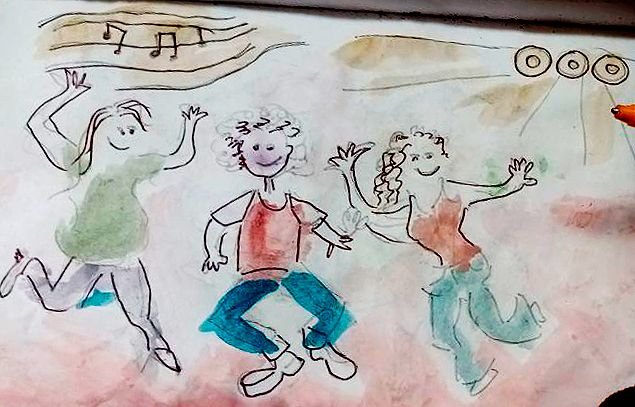
Los quince años
Las morochas del piso 1 de nuestro edificio, Evens y Shirley, organizaron su fiesta a todo trapo, con cuadrilla y todo. Lo muchachos de la vecindad se sumaron a la cuadrilla, y arribaron muchas chicas de diversa proveniencia, amigas y primas de las morochas. Yo no quise ser parte de la cuadrilla, pero asistí a todos los ensayos que, después del rigor del entrenamiento, terminaban igualmente en bailadera libre cuando la instructora se retiraba.
La rumba fue en la mezzanina de la torre Phelps en Plaza Venezuela. En esos tiempos se preparaban cubalibres con ron y pecsi, pero a veces también güisqui con pecsi. Espero eso no cause tanto estupor porque en México, por ejemplo, las cubas se hacían con ron bacardí, pero también con brandi. Mis primeras peas tuvieron ese color, porque la mezcla es explosiva y se deja colar. Asistió a esa fiesta nuestra primera finalista del Miss Mundo, Judith Castillo, y una hermana mayor que estaba buenísima también. No bailé con ellas ¡Que fu! Eran hermanas de Teodoro, novio de Shirley. La cuadrilla quedó muy bien. Pero a media fiesta alguien que no llegó temprano propuso que volvieran a bailar. Chicas y chicos ya estaban bastante zaratacos. No salió estrepitosamente mal. Resultó entre pintoresco y divertido por las improvisaciones que hicieron para resolver equívocos.
The fifteen years
The twins on the first floor of our building, Evens and Shirley, organized their party in full swing, with gang and all. The boys from the neighborhood joined the gang, and many girls from different backgrounds arrived, friends and cousins of the brunettes. I didn't want to be part of the cuadrilla, but I attended all the rehearsals which, after the rigorous training, ended in a free dance when the instructor left.
The rumba was in the mezzanine of the Phelps Tower in Plaza Venezuela. In those times, cubalibres were prepared with rum and pecsi, but sometimes also güisqui with pecsi. I hope this does not cause so much astonishment because in Mexico, for example, cubas were made with bacardi rum, but also with brandy. my first drunks had that color, because the mixture is explosive and it is allowed to seep. That party was attended by our first Miss World finalist, Judith Castillo, and an older sister who was also very hot. I didn't dance with them, too bad! They were sisters of Teodoro, Shirley's boyfriend. The quadrille looked great. But in the middle of the party someone who had not arrived early suggested that they go back to dancing. Girls and boys were already quite drunk. It didn't go badly at all. It was between picturesque and funny because of the improvisations they made to solve mistakes.
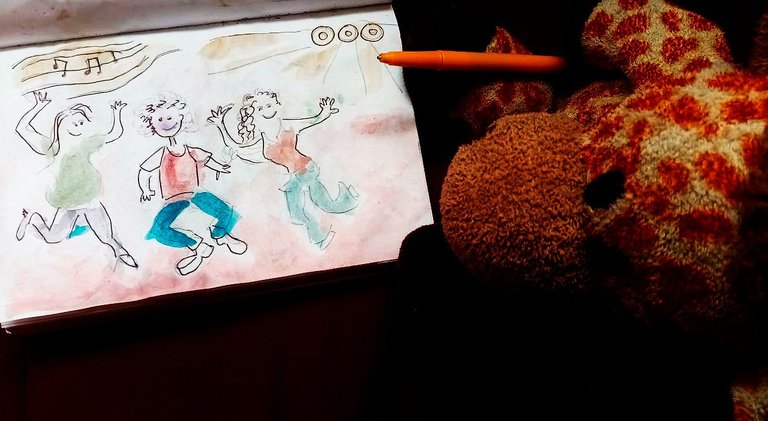
Del Che ché colé al Ah-ah/O-no
Las fiestas en el edificio eran más sencillas que las de salón. Eran cumpleaños o reuniones espontáneas de amistades. Se animaban mucho cuando aparecía la salsa, sobre todo un cassettito que contenía el “Che Che Colé” (1971), de Güili Colón en la voz de Héctor Lavoe. Cuando la dupla sacó el disco “El juicio” (1972) la alegría explotó porque no hay fiesta latina donde falten las piezas “Ah-Ah/O-No”, “Aguanile” y “Timbalero”.
Las rumbas alcanzaban alto nivel cuando sonaban “Anakaona” (1971), del Tite Curet Alonso en la voz de Cheo Feliciano, y “Se me perdió la cartera” (1973), de Larry Harlow, quien por cierto acaba de dejar este plano. La Fania reunía a las figuras grandes del Caribe con el liderazgo de Johnny Pacheco y Celia Cruz.
Elevó bastante nuestro nivel espiritual la irrupción de La Dimensión Latina, en 1972, con el liderazgo de Oscar D´León, el gordo César “Albóndiga” Monge y la voz de Vladimir Lozano. Oscar D´León y su salsa mayor se abrirían camino propio a partir de 1976. Con ese sabor venezolano disfrutamos mucho el cásico “Mata siguaraya”, entre otras piezas provenientes de las corrientes creadoras del Caribe.
Otros hitos de raigambre nacional fueron “El Sonero Clásico del Caribe” (1976), fundado por Carlos Emilio “Pan con Queso” Landaeta; “El trabuco venezolano” (1977), creado y dirigido por Alberto Naranjo, y el disco que alcanzó a grabar la siempre recordada agrupación “Madera”, de la parroquia San Agustín. Su tragedia en el río Orinoco marcó el alma de nuestro pueblo. Pero no hemos dejado de cantar y bailar con sus piezas. Con ellos, el baile de tambor empezaría a introducirse en las fiestas. El aporte de “Un Solo Pueblo” (1976) llegaría después. Y ahora los tambores afrovenezolanos están presentes en cualquier ágape y hasta en las discotecas.
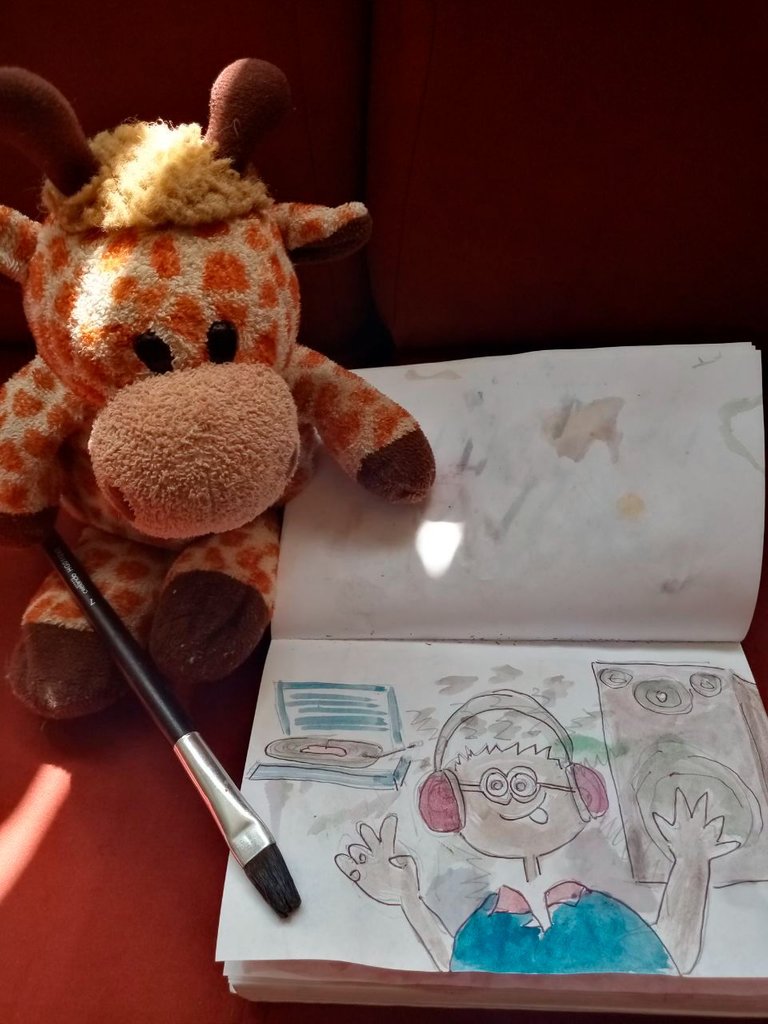
From Che ché colé to Ah-ah/O-no
The parties in the building were simpler than the salon parties. They were birthdays or spontaneous gatherings of friends. They were very animated when salsa appeared, especially a little cassette that contained the "Che Che Colé" (1971), by Güili Colón in the voice of Héctor Lavoe. When the duo released the album "El juicio" (1972) the joy exploded because there is no Latin party without the pieces "Ah-Ah/O-No", "Aguanile" and "Timbalero".
The rumbas reached a high level when "Anakaona" (1971), by Tite Curet Alonso in the voice of Cheo Feliciano, and "Se me perdió la cartera" (1973), by Larry Harlow, who by the way has just left this world. Fania brought together the great figures of the Caribbean with the leadership of Johnny Pacheco and Celia Cruz.
The irruption of La Dimensión Latina, in 1972, with the leadership of Oscar D'León, the fat César "Albóndiga" Monge and the voice of Vladimir Lozano, raised our spiritual level quite a bit. Oscar D'León and his “salsa mayor” would open their own path in 1976. With that Venezuelan flavor we enjoyed the classic "Mata siguaraya", among other pieces coming from the creative currents of the Caribbean.
Other milestones of national roots were "El Sonero Clásico del Caribe" (1976), founded by Carlos Emilio "Pan con Queso" Landaeta; "El trabuco venezolano" (1977), created and directed by Alberto Naranjo, and the album recorded by the always remembered group "Madera", from the parish of San Agustín. His tragedy in the Orinoco River marked the soul of our people. But we have not stopped singing and dancing with their pieces. With them, the drum dance would begin to be introduced in the festivities. The contribution of "Un Solo Pueblo" (1976) would come later. And now Afro-Venezuelan drums are present in any agape and even in discotheques.
Joyas de la salsa setentosa
Héctor Lavoe y Willie Colón - Chechecolé, Barrunto, Bacalao, Calle Luna Calle Sol
Hector Lavoe & Willie Colon... Ah Ah Oh No
El Trabuco Venezolano. Imágenes latinas
El Sonero Clásico del Caribe. Edición especial
Grupo Madera - Compañeros
Canto de Guaraña – Un Solo Pueblo en vivo Invitado Ismael Miranda
Los caminos del funki
Hubo otras vertientes de raíces afronorteamericanas que nos venían dejando marca. La del funky y el soul. Al principio con James Brown que irrumpió con “Sex Machine” (1970) y que era impelable en un set. Y otro que se venía abriendo paso desde los sesenta, don Barry White, quien luego crearía su propia banda The Love Unlimited Orchestra. Varios de sus éxitos han llegado hasta el presente como “Can't get enough of your love babe” (1974) en películas y series de la tele.
Nos acompañaban varias figuras de la pléyade del sello Motown: The Temptations, Stevie Wonder, Marvin Gave, Gladys Knight y los Pips. Entre estas figuras se contó un joven Michael Jackson, que brillaba en medio de unos hermanos menos talentosos.
Se iría abriendo camino el disco music prefigurado, entre otras tantas figuras, por Gloria Gaynor, con “Never Can Say Goodbye” (1974). Carl Douglas impondría “Kung fu fighting” (1974), una de las mejores piezas para bailar el bumpi, estilo de baile qu nuestro comediante Joselo bautizó en Venezuela como “el Caderú”. Se colarían en las fiestas Disco-Tex and the Sex-O-Lettes por “Get Dancing” (1974) y KC and the Sunshine band por “Thats the way. I like it” (1975). El reinado del disco lo asumiría Donna Summer con su sensual éxito “Love to Love You Baby” (1975) y los que vendrían después.
La aparición del disco “Siembra” (1978), de Rubén Blades, la llegada del changa y el fenómeno Travolta, cambiaron todo el panorama en la segunda mitad de la década, anunciando nuevos rumbos. “Fiebre del sábado por la noche” (1977) dejaría un registro de baile, indumentaria y cierto tumbaíto de pavo. A mí no me gustaba el producto comercial, pero musicalmente contenía una renovación propuesta por los Bee-Gees, sobre todo en la línea instrumental del bajo y voces siempre versátiles. Definitivamente fue un fenómeno sociocultural en torno a la figura de John Travolta. Grease Vaseline (1978) me gustaría mucho más.
La bailada para un set
Pasos de baile música Disco de los 70
Lipps Inc 🌷🌸♒♓ Funkytown Original Boosted Extended Mix 🍀🍁1980 HQ by magistar
Carl Douglas Kung Fu Fighting (Original Music Video)
Saturday Night Fever Soundtrack
Grease - You're The One That I Want
Hay pocas recreaciones o registros del “Caderú” o “Bumpi” disponibles en línea. Sin embargo, algo conseguí:
#1 Bump Dance Music Video! Live US YouTube TV with KC & Sunshine Band!
Recreación contemporánea del Bump o Caderú
The paths of funk
There were other African-American roots that were leaving their mark on us. That of funk and soul. At the beginning with James Brown who burst in with "Sex Machine" (1970) and who was unmissable in a set. And another who had been making his way since the sixties, Mr. Barry White, who would later create his own band The Love Unlimited Orchestra. Several of his hits have survived to the present day, such as "Can't get enough of your love babe" (1974) in movies and TV series.
We were accompanied by several figures of the Motown label's pleiad: The Temptations, Stevie Wonder, Marvin Gave, Gladys Knight and the Pips. Among these figures was a young Michael Jackson, who shone in the midst of less talented siblings.
The disco music was opening its way, prefigured, among many other figures, by Gloria Gaynor, with "Never Can Say Goodbye" (1974). Carl Douglas would impose "Kung fu fighting" (1974), one of the best pieces to dance the bumpi, style of dance that our comedian Joselo baptized in Venezuela as "el Caderú". Would prevail Disco-Tex and the Sex-O-Lettes for "Get Dancing" (1974) and KC and the Sunshine band for "Thats the way. I like it" (1975). The reign of disco-music would be taken over by Donna Summer with her sensual hit "Love to Love You Baby" (1975) and those that would follow.
The appearance of Rubén Blades' album "Siembra" (1978), the arrival of changa and the Travolta phenomenon, changed the whole panorama in the second half of the decade, announcing new directions. "Fiebre del sábado por la noche" (1977) would leave an imprint on the dance, clothing and even a certain way of walking. I didn't like the commercial product, but musically it contained a renewal proposed by the Bee-Gees, especially in the instrumental line of the bass and always versatile voices. It was definitely a socio-cultural phenomenon around the figure of John Travolta. Grease Vaseline (1978) I would like much more.
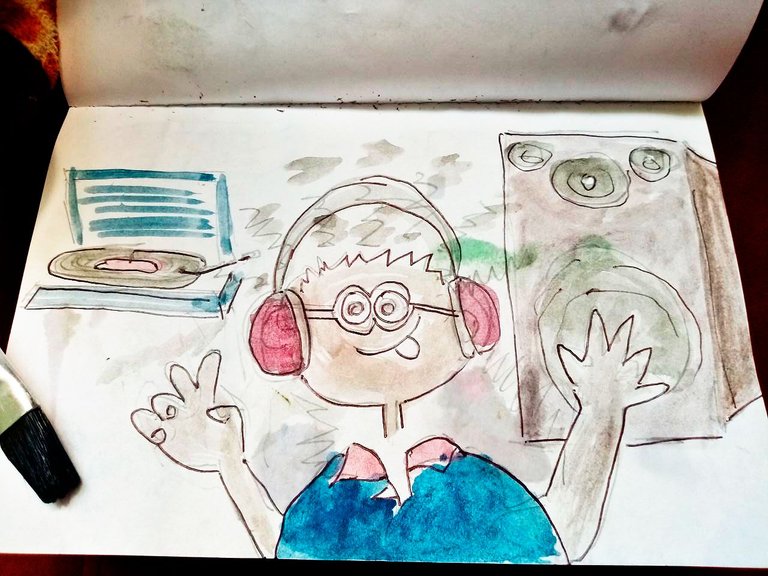
Artillería del rocanrol
Mi fiesta de quince la organicé con mis compinches del liceo Luis Alberto y Pablo. Despejamos la sala y metimos el equipo de sonido en el cuarto, con un plato adicional para hacer las transiciones. Sin acceso de los invitados al control maestro, limitado a los tres discjockeys y a eventuales autorizaciones. Nos interesaba garantizar la integridad y trato adecuado de nuestros discos. Y por supuesto, poder turnarnos para ir a bailar. Invitamos a chicas del liceo y de la vecindad con sentido estratégico, pensando en las pretendidas y en nuestras posibilidades.
La logística sustentada por mi padre consistía en unas tres cajas de cerveza, tizana cargadita, algunas tellas de ron, refrescos, yelo, limones y una botellita de vino para jevitas tímidas. Y bastante chogüí, chistrís, papitas, tostones y maní. Papá siempre nos preparaba tacos mexicanos y pambasitos, que son pastelitos de papa tradicionales de la República del Tequila y el Mezcal.
Temprano hay piezas largas que pueden ponerse para ir creando ambiente mientras van llegando los invitados, tales como “Get Ready” (1970), de Rare Earth; “Loves lies bleeding” (1973), de Elton John; y “Vehicle”, de Ides of March (1970).
Ahora bien, el rock y pop se iban alternando con piezas rápidas y suaves. Luego entraban los sets de salsa malandra y el funky.
Hasta que llegaba la hora dura que podía arrancar con “Rock and roll”, de los Zepellin, y lanzábamos seguiditos largos rocanroles de las grandes bandas. El álbum doble negro, “Uriah Heep live” (1973), corría con varias piezas. Hasta desembocar en el “Meddley”, y a continuación por lo menos dos más de los grandes performances en vivo: “I´m going home” (1969), de Ten years after; y “I don´t need no doctor” (Nick Ashford, Valerie Simpson y Jo Armstead, 1966), versionada por Humble Pie en 1971.
El final del set largo de rocanrol implicaba ir al baño o refrescarse con una poderosa chela, y prepararse para el set de pegaditas. El que no cuadraba pareja se quedaba viendo por la ventana por largo o rato.
Entre las piezas intimistas hay una extensa lista. En la voz de Harry Nilson, “Without you” (Pete Ham y Tom Evans, 1970). Cat Stevens lanzó su disco “Tea for the tillerman” (1970), del cual son impelables “Father and son” y “Wild world”, aunque a mí me atrapó siempre “Where do the children play?”. Del álbum Goodbye yellow brick road (1973), de Elton John, tomamos la pieza que da nombre al disco, y adicionalmente “Funeral for a friend” y “Bennie and the Jets”. Minnie Riperton se colaba con "Lovin' you" (1975).
Y por supuesto metíamos unos venenitos que formaban parte de la década, tales como “Let it be” (Lennon y McCartney, 1970) y la inigualable “Stairways to heaven” (1971), de Led Zeppelin. No podía faltar “July morning” (1971), de los Uriah Heep. En los momentos de ensoñación, con todo cuadrado con las chicas, entrelazados en un ladrillito, el disco de los mejores éxitos de Bee-Gees lo dejábamos correr completo.
Y cuando íbamos a picar la torta y soplar las velas, convocábamos a la mesa con “El cumpleaños del mago”, de Uriah Heep. En esos tiempos era fácil llamar un taxi para volver a casa. Creo que nos divertimos bastante.
Piezas clave de rocanrol
URIAH HEEP - Classic Live 1973-75
Uriah Heep Medley Live 1973
I Don't Need No Doctor (Live At The Fillmore East/1971)
Rare Earth / Big Brother / 1974 California Jam
Rare Earth-Get ready
Esta pieza tiene 51 años: VEHICLE (Live) by The Ides Of March
Elton John-Funeral for a Friend/Love Lies Bleeding (1976) Live at Earl's Court, London
Uriah Heep - The Magician's Birthday
Rock 'n' roll artillery
I organized my fifteenth birthday party with my high school buddies Luis Alberto and Pablo. We cleared the hall and put the sound system in the room, with an additional plate to make the transitions. No guest access to the master control, limited to the three disc jockeys and eventual authorizations. We were interested in guaranteeing the integrity and proper treatment of our long plays. And of course, to be able to take turns to go dancing. We invited girls from the high school and from the neighborhood with a strategic sense, thinking about wanted girls and our possibilities.
The logistics supported by my father consisted of about three cases of beer, tizana cargadita, some bottles of rum, soft drinks, ice, lemons and a bottle of wine for shy girls. And plenty of chogüí, chistrís, chips, tostones and peanuts. Dad always made us Mexican tacos and pambasitos, which are traditional potato cakes from the Republic of Tequila and Mezcal.
Early on there are long pieces that can be played to set the mood as guests arrive, such as "Get Ready" (1970) by Rare Earth; "Loves lies bleeding" (1973) by Elton John; and "Vehicle" by Ides of March (1970).
Now, rock and pop were alternated with fast and smooth pieces. Then came the salsa malandra and funky sets.
Until the hard hour arrived, which could start with "Rock and roll", by the Zepellin, and we would play long rock and roll songs by the big bands in a row. The double black album, "Uriah Heep live" (1973), ran with several pieces. It ended with "Meddley", and then at least two more of the great live performances: "I'm going home" (1969), from Ten years after; and "I don't need no doctor" (Nick Ashford, Valerie Simpson and Jo Armstead, 1966), covered by Humble Pie in 1971.
The end of the long rock 'n' roll set meant going to the bathroom or refreshing oneself with a powerful drink, and getting ready for the set of soft songs. Anyone who didn't match up would stare out the window for a long time.
Among the intimate pieces there is an extensive list. In the voice of Harry Nilson, "Without you" (Pete Ham and Tom Evans, 1970). Cat Stevens released his album "Tea for the tillerman" (1970), from which "Father and son" and "Wild world" are unmissable, although "Where do the children play?" always caught my ear. From the album Goodbye yellow brick road (1973), by Elton John, we take the piece that gives its name to the album, and additionally "Funeral for a friend" and "Bennie and the Jets". Minnie Riperton slipped in with "Lovin' you" (1975).
And of course we included some of the poisons that were part of the decade, such as "Let it be" (Lennon and McCartney, 1970) and the incomparable "Stairways to heaven" (1971), by Led Zeppelin. Uriah Heep's "July morning" (1971) was not to be missed. In the moments of reverie, with everything agreed with the girls, intertwined in a little brick, we let the Bee-Gees' greatest hits album play in its entirety.
And when we were about to cut the cake and blow out the candles, we'd summon the table with Uriah Heep's "The Magician's Birthday". In those days it was easy to call a taxi to get home. I think we had a lot of fun.
By Cristóbal J. Alva Ramírez of Manzanillo and Caracoles
Drawings by Pepo Alva Silva
Caracas, September 12, 2021
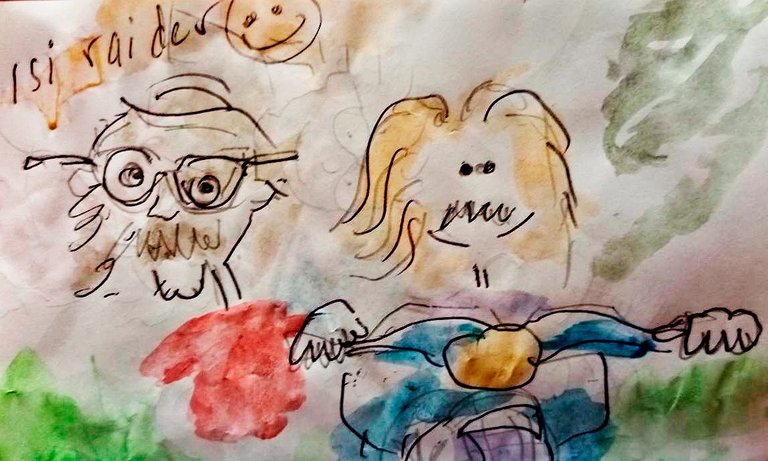
Easy Rider (1969) con Peter Fonda y Dennis Hooper
¡Tremenda radiografía de nuestra vida en aquella época!
Para seguir con el lenguaje coloquial... ¡te la comiste!
¡Felicidades! Esta publicación obtuvo upvote y fue compartido por @la-colmena, un proyecto de Curación Manual para la comunidad hispana de Hive que cuenta con el respaldo de @curie.
Si te gusta el trabajo que hacemos, te invitamos a darle tu voto a este comentario y a votar como testigo por Curie.
Si quieres saber más sobre nuestro proyecto, acompáñanos en Discord: La Colmena.
Do you want to get involved? Do you want to support music and this project? Follow us to keep you updated and read our Introduction post!
🎶 Join us on our Discord Server! 🎵
Congratulations @cristorebelde! You have completed the following achievement on the Hive blockchain and have been rewarded with new badge(s) :
Your next target is to reach 2500 upvotes.
You can view your badges on your board and compare yourself to others in the Ranking
If you no longer want to receive notifications, reply to this comment with the word
STOPCheck out the last post from @hivebuzz: